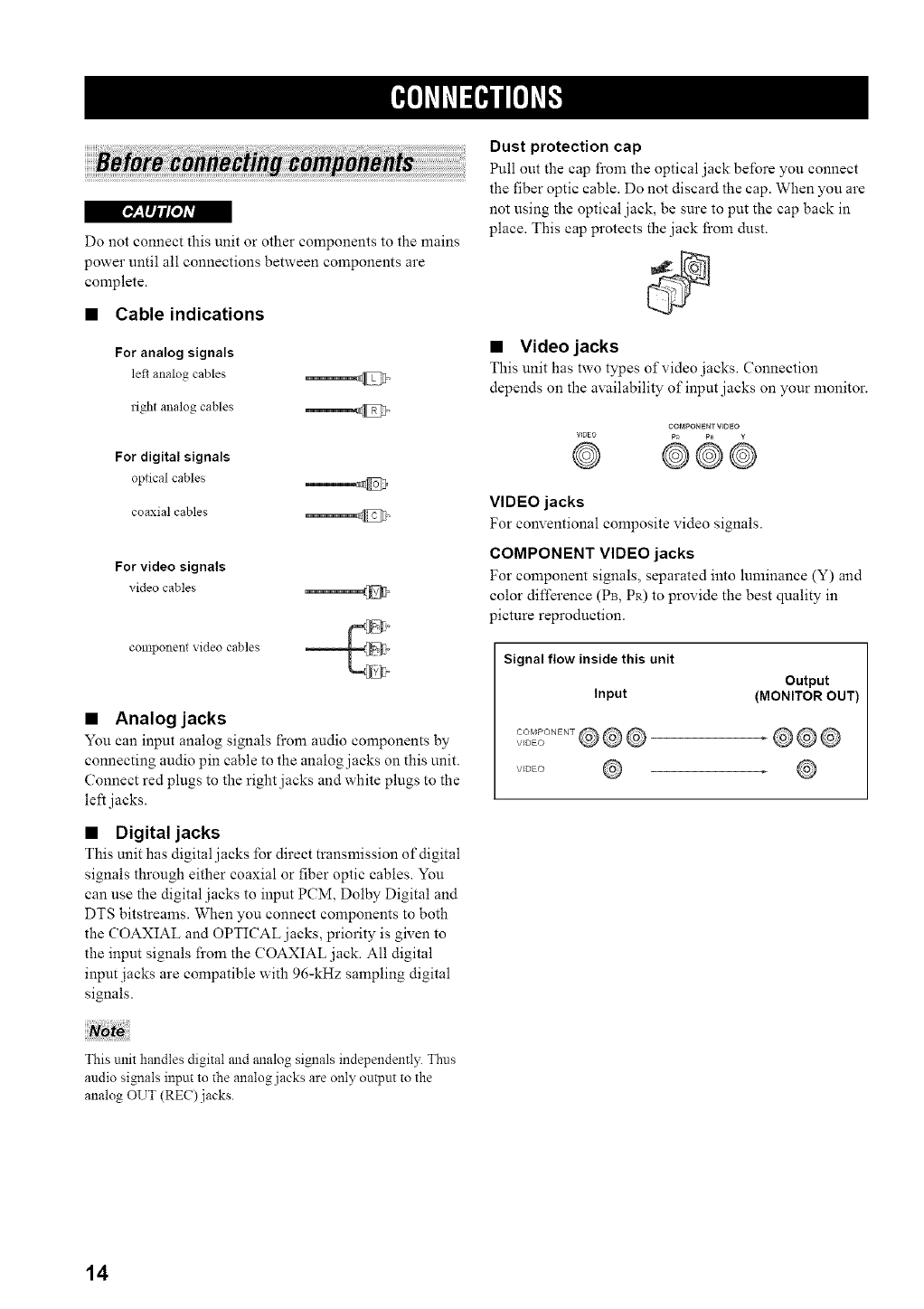
[_aY#H£oTJ,'l
Do not connect this unit or other components to the mains
power until all connections between components are
complete.
• Cable indications
For analog signals
left analog cables
right analog cables
For digital signals
optical cables
coaxialcables
For video signals
video cables
component video cables
• Analog jacks
You can input analog signals fi'om audio components by
connecting audio pin cable to the analog jacks on this unit.
Connect red plugs to the right jacks and white plugs to the
left jacks.
• Digital jacks
This unit has digital jacks lbr direct transmission of digital
signals through either coaxial or fiber optic cables. You
can use the digital jacks to input PCM, Dolby Digital and
DTS bitstreams. When you connect components to both
the COAXIAL and OPTICAL jacks, priority is given to
the input signals fi'om the COAXIAL jack. All digital
input jacks are compatible with 96-kHz sampling digital
signals.
This unit handles digital and analog signals independently. Thus
audio signals input to the analog jacks are only output to the
analog OUT (REC)jacks.
Dust protection cap
Pull out the cap fi'om the optical jack before you connect
the fiber optic cable. Do not discard the cap. When you are
not using the optical jack, be sure to put the cap back in
place. This cap protects the jack from dust.
• Video jacks
This unit has two types of video jacks. Connection
depends on the availability of input jacks on your monitor.
COMPONENTVK_EO
WDEO pR PB Y
@ @@@
VIDEO jacks
For conventional composite video signals.
COMPONENT VIDEO jacks
For component signals, separated into luminance (Y) and
color difference (PB,PR) to provide the best quality in
picture reproduction.
Signal flow inside this unit
Input
V_DEO
Output
(MONITOR OUT)
VIDEO
14


















